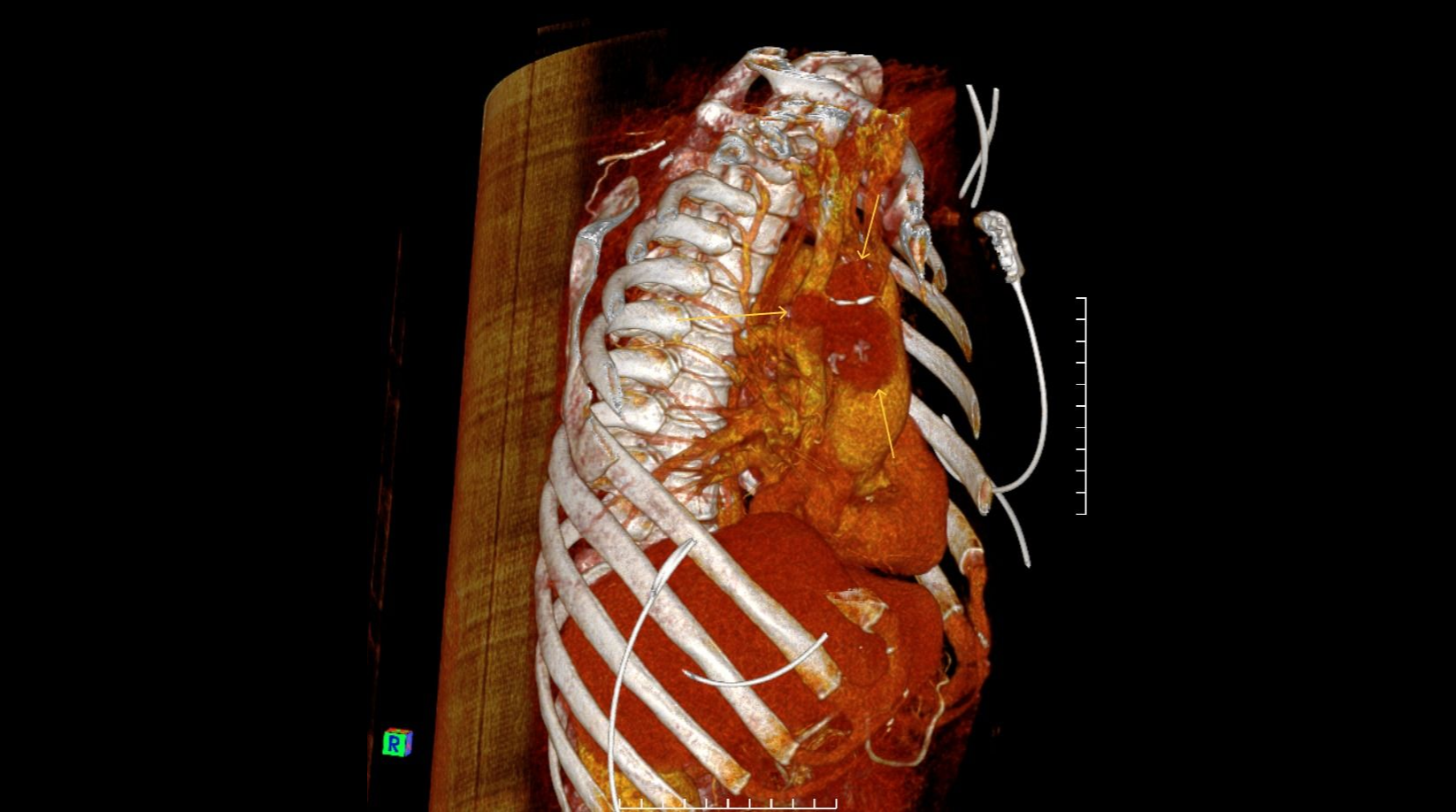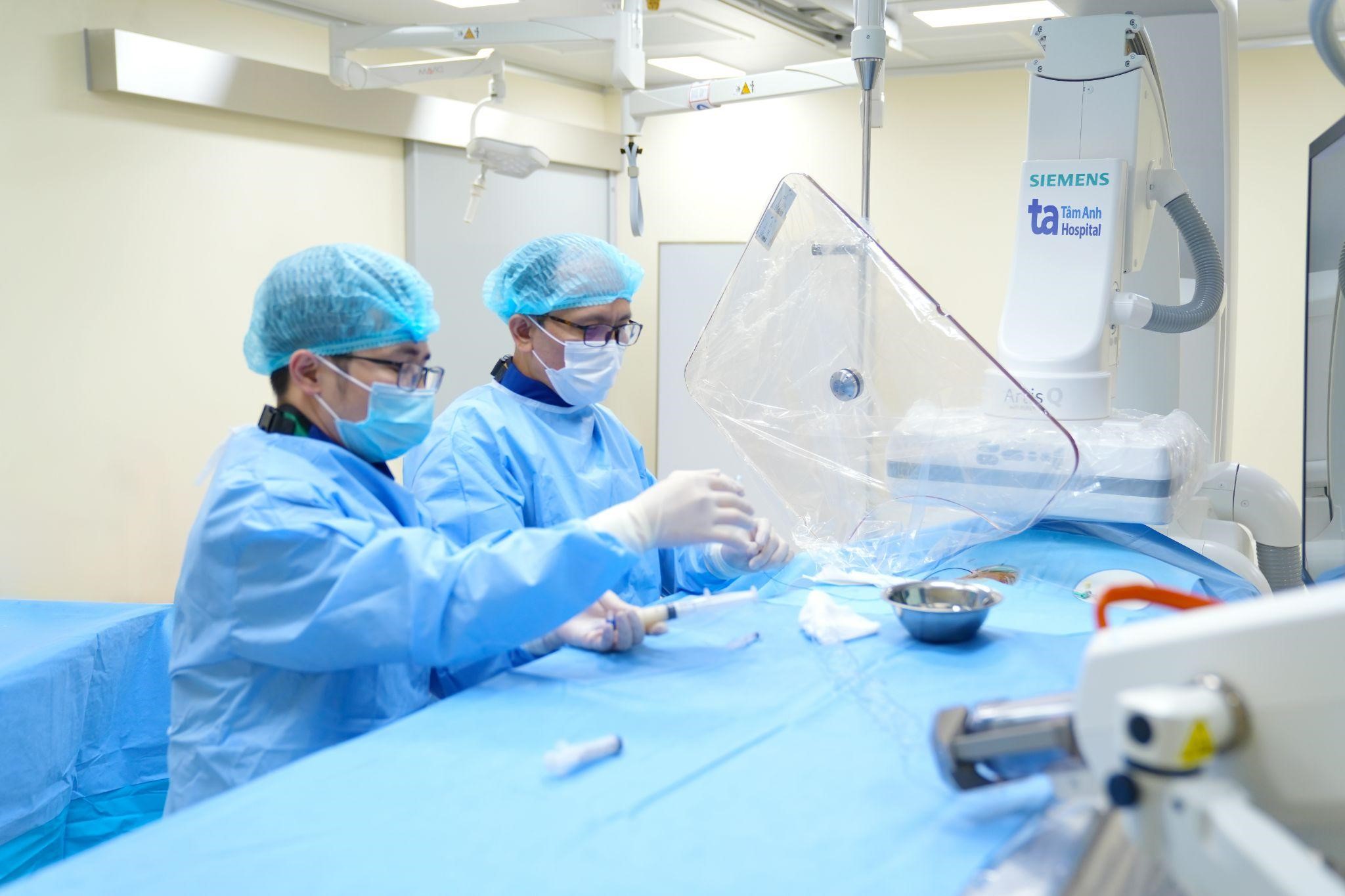Five months after undergoing lung cancer surgery, Mr. Dung recently experienced difficulty breathing and headaches, leading him to seek treatment at Tam Anh General Hospital in Hanoi. A 3D computed tomography angiogram revealed blockages in several veins, including the superior vena cava, subclavian vein, jugular vein, with some sections completely closed.
The superior vena cava is a major vein that carries blood from the head, neck, and upper extremities back to the heart. Superior vena cava syndrome commonly occurs in lung cancer patients, as the tumor obstructs blood flow to the heart, causing coughing, shortness of breath, facial and neck swelling, hoarseness, and difficulty swallowing. Associate Professor, Doctor Nguyen Xuan Hien, Director of the Center for Diagnostic Imaging and Interventional Radiology, explained that the blood, unable to return to the heart, accumulates in the head and neck area, causing swelling in the patient's face, neck, arms, and chest. This condition is often called "jacket swelling" due to its resemblance to wearing a jacket.
 |
Mr. Dung's superior vena cava blockage as seen on a 3D CT angiogram. Photo: Tam Anh General Hospital |
According to Associate Professor Hien, such cases were traditionally treated with bypass surgery to restore blood flow. However, given Mr. Dung's advanced age, weakened health, status as a war veteran with shrapnel in his lungs, and recent cancer surgery, further surgery posed significant risks. After consultation, the medical team opted for a less invasive procedure: placing a stent to reopen the vein.
Inserting the catheter proved challenging due to fibrosis and adhesions in the chest cavity from the previous surgery, compounded by the tumor's invasion of surrounding tissues. After successfully navigating the catheter to the blocked area of the superior vena cava, the team cleared the blockages, carefully avoiding dislodging blood clots that could travel to the pulmonary artery and cause stroke. They then placed the stent.
Post-surgery, Mr. Dung's headaches subsided. By the third day, the swelling in his face, chin, and eyes decreased, his breathing improved, and he slept better. He was discharged and scheduled for a follow-up appointment after one month to continue his lung cancer treatment.
 |
Associate Professor Hien and his team placing a stent to reopen Mr. Dung's vein. Photo: Tam Anh General Hospital |
Associate Professor Hien emphasized the seriousness of superior vena cava syndrome in lung cancer patients, stressing the need for accurate assessment and multidisciplinary treatment. Patients experiencing symptoms such as swelling of the face, neck, and arms, shortness of breath, persistent cough, or hoarseness should seek immediate medical attention for diagnosis. Early identification of the cause and extent of the blockage allows doctors to implement appropriate treatment, including medication to alleviate symptoms, stent placement, or radiation/chemotherapy to shrink the tumor. In some cases, superior vena cava syndrome can signal the progression of a malignancy.
Hoai Pham
| Readers can submit questions about cancer here for doctors to answer. |












